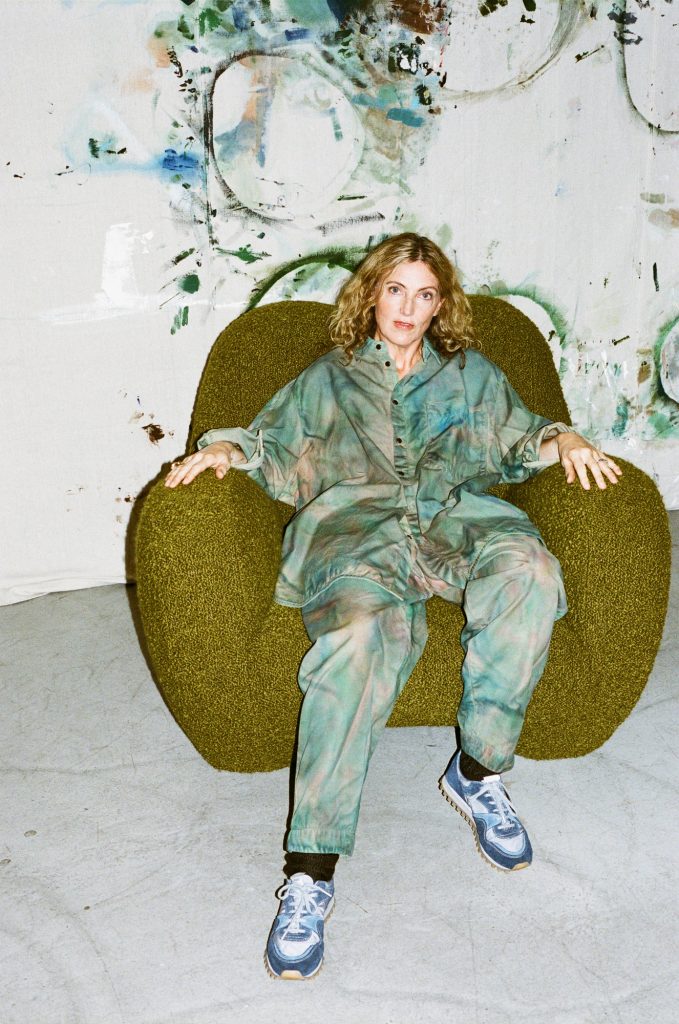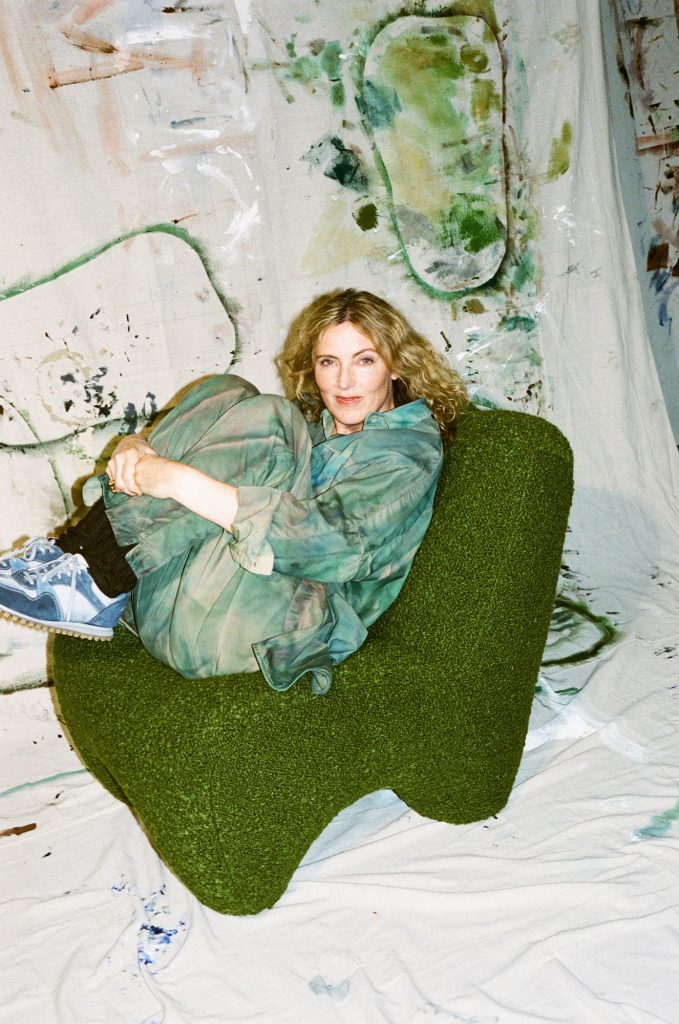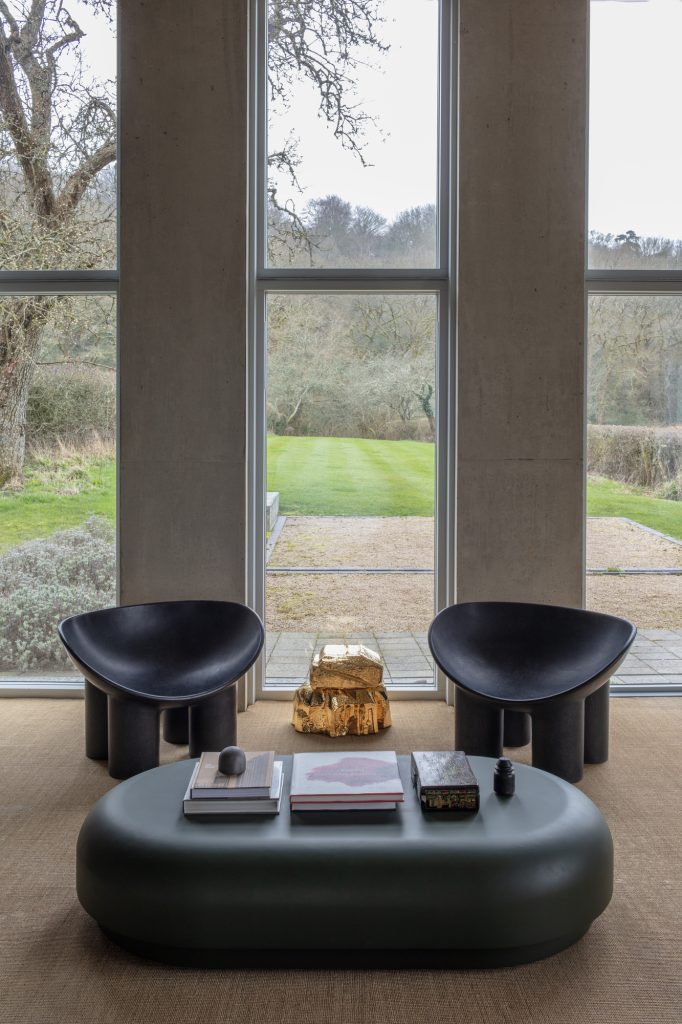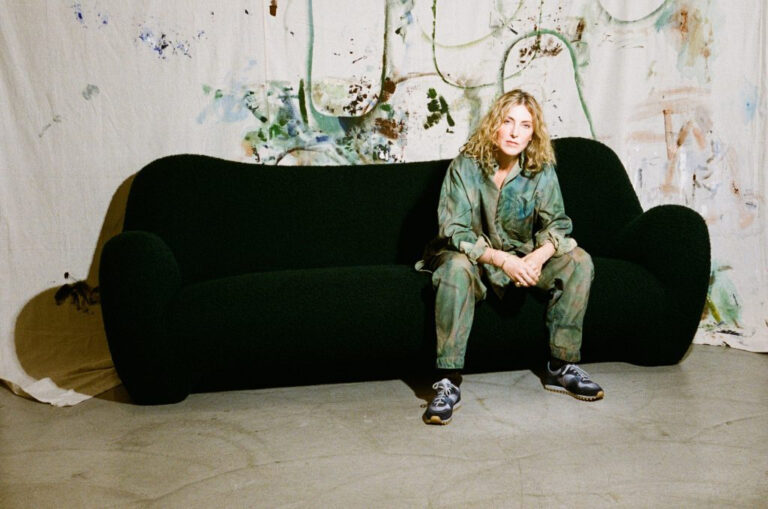

Gummy Chair

Photography by MATHEW DONALDSON
Faye Toogood’s work is a dynamic fusion of artistry and utility, where the lines between furniture, fashion, and sculpture blur into seamless narratives. Her designs are more than objects – they are expressions of the story she tells through the textures, shapes, and materials she carefully selects. With a strong belief that true creativity doesn’t follow a linear path, Toogood invites us into a world where everything from a coat to a chair resonates with meaning and purpose. In her studio, there’s a constant flow of experimentation, driven by intuition and an enduring respect for craftsmanship, resulting in designs that are timeless yet undeniably contemporary.
hube: Your work spans multiple disciplines, from fashion to furniture design. How do you navigate the interplay between these fields, and what do you believe is the philosophical core that unites them?
Faye Toogood: The idea that I couldn’t design or make what I wanted because it’s not my ‘area’ is quite limiting. I look past the boundaries of disciplines and create wherever it fits, with the best possible design outcome. I never formally trained as a designer, and this allows me to think independently. I feel able to find the right medium or genre to express the narrative I want to tell at the time. My approach to design is intuitive and expressive. I don’t really see any difference between a coat, a chair, or an interior. The approach and the ethos are the same. The most important thing to me is that everything I do – and the studio does – is relevant. Essentially, it has a place, it is desired, and it’s not just for me.
Despite the varied contexts, a consistent thread runs through all our projects: meticulous attention to detail. Whether we’re crafting a piece of furniture, designing an interior, or creating a fashion collection, the process is rooted in a deep respect for craftsmanship and materiality.
h: Your designs often emphasise materiality and form. How do you approach the selection of materials for your projects, and what role does materiality play in conveying the essence of your work?
FT: I’m passionate about materials, and they are the starting point of everything I do. There’s a big area dedicated to our materials library in the studio. I’ll pull pieces from this library and see how they talk to each other.
Although rigorous in execution, there is always a purposeful rawness to my work. For me, the surface texture of a design remains as important as its sculptural shape.
I would love people to think about their relationship with materials and the hierarchies of value. Who are we to say that gold is more precious than tin? I value canvas and clay as much as cashmere and bronze.
h: Your work transforms raw, industrial materials into refined pieces of art. How do you choose materials that not only serve a functional purpose but also act as metaphors for the themes you explore in your designs?
FT: A huge part of my work has been focused on creating ‘wow’ out of ubiquitous, simple, basic materials.
For my Assemblage 6, Unlearning, we used crumpled paper, tape, and cardboard to make small maquettes that we replicated as lasting full-scale forms. It’s freeing to use such simple materials because they allow endless possibilities and teach you not to be precious about an idea. In these Assemblages, I try to push the boundaries of manufacture that wouldn’t be possible in mass manufacture. My Roly-Poly chair has been realised in raw fibreglass, patinated bronze, and precious crystal barium glass – all producing strikingly different outcomes in one form.

